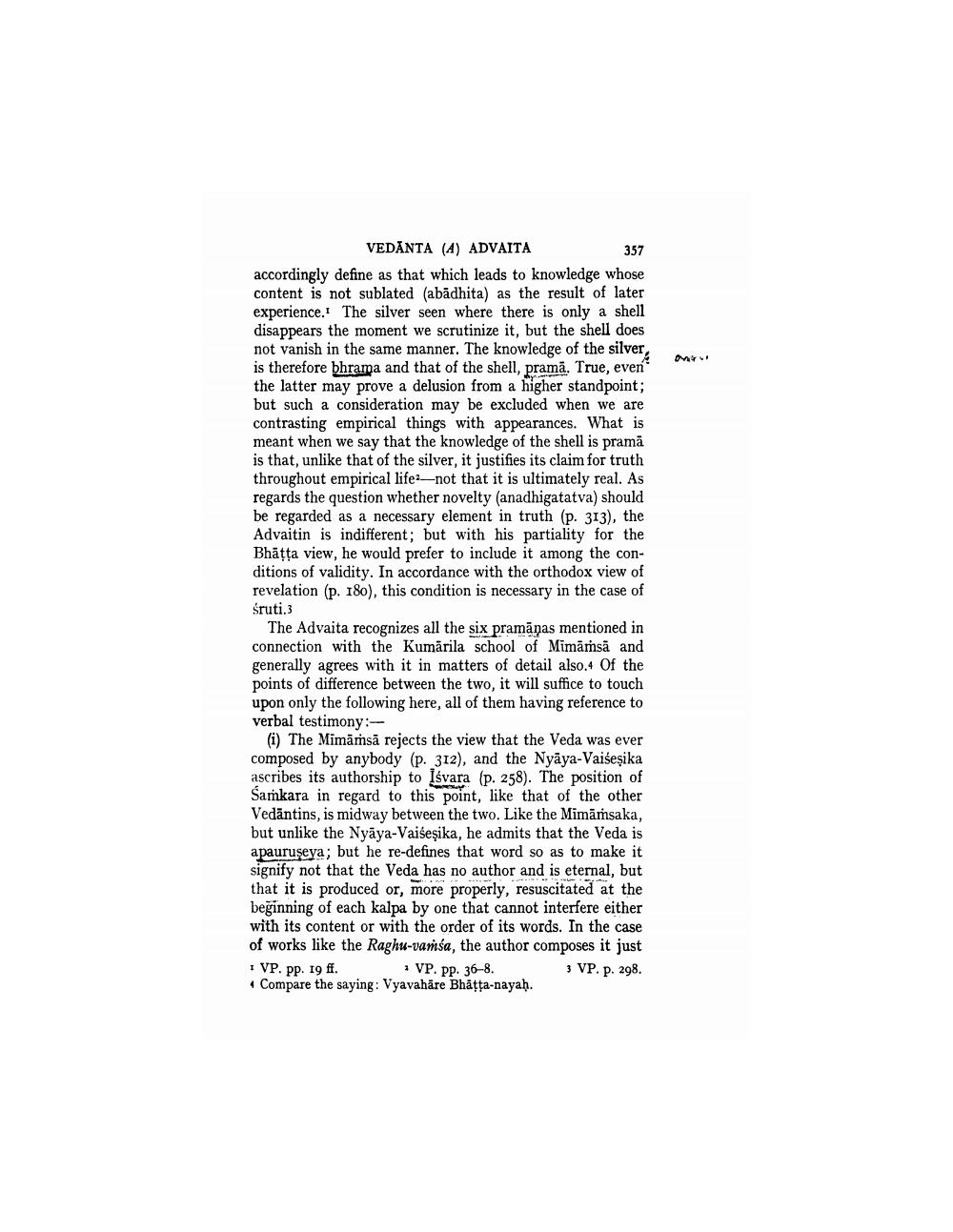________________
VEDĀNTA (A) ADVAITA
357 accordingly define as that which leads to knowledge whose content is not sublated (abadhita) as the result of later experience. The silver seen where there is only a shell disappears the moment we scrutinize it, but the shell does not vanish in the same manner. The knowledge of the silver, is therefore bhrama and that of the shell, pramā. True, even the latter may prove a delusion from a higher standpoint; but such a consideration may be excluded when we are contrasting empirical things with appearances. What is meant when we say that the knowledge of the shell is pramā is that, unlike that of the silver, it justifies its claim for truth throughout empirical life—not that it is ultimately real. As regards the question whether novelty (anadhigatatva) should be regarded as a necessary element in truth (p. 313), the Advaitin is indifferent; but with his partiality for the Bhāțţa view, he would prefer to include it among the conditions of validity. In accordance with the orthodox view of revelation (p. 180), this condition is necessary in the case of Śruti.3
The Advaita recognizes all the six pramānas mentioned in connection with the Kumārila school of Mimāmsă and generally agrees with it in matters of detail also. Of the points of difference between the two, it will suffice to touch upon only the following here, all of them having reference to verbal testimony:
(i) The Mimārsā rejects the view that the Veda was ever composed by anybody (p. 312), and the Nyāya-Vaišeşika ascribes its authorship to Isvara (p. 258). The position of Samkara in regard to this point, like that of the other Vedāntins, is midway between the two. Like the Mimāṁsaka, but unlike the Nyāya-Vaišeşika, he admits that the Veda is apauruseya; but he re-defines that word so as to make it signify not that the Veda has no author and is eternal, but that it is produced or, more properly, resuscitated at the beginning of each kalpa by one that cannot interfere either with its content or with the order of its words. In the case of works like the Raghu-vamsa, the author composes it just I VP. pp. 19 ff. VP. pp. 36-8.
VP. p. 298. Compare the saying: Vyavahäre Bhatta-nayah.




